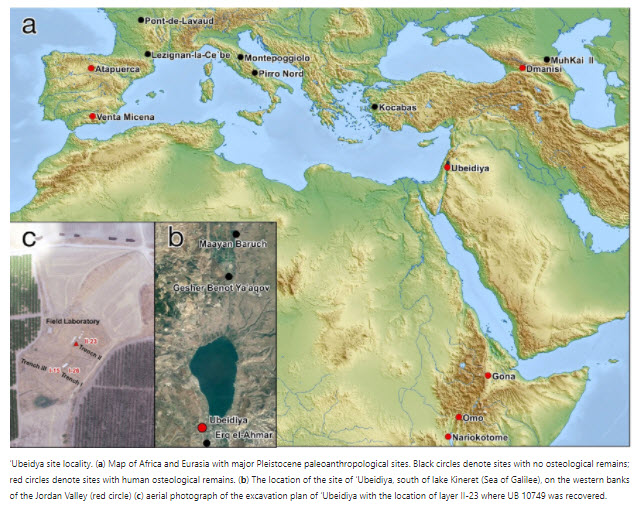Ono Scholar Publishes Groundbreaking Research on Earliest Human Fossil Evidence in Israel
Prof. Ella Been, Director of Ono Academic College’s Sportstherapy program, together with Prof. Alon Barash of Bar-Ilan University and other colleagues, recently published an article in the prestigious journal, Scientific Reports, documenting the finding of the earliest record of human existence in the Middle East. The discovery was based on a human lumbar vertebra bone fragment found in Ubeidiya, in the Jordan Valley south of the Sea of Galilee, belonging to 6-12 year-old child who died approximately 1.5 million years ago.
Prof. Been, an expert in spinal evolution, said “Had this child reached adulthood, he would have reached a height of over 180 centimeters [5 feet, 9 inches]. This ancient human is similar in size to other large hominins found in East Africa and is different from the short-statured hominins that lived in Georgia [Caucasus].”
As such, Been’s study helps us better understand the earliest human migration out of Africa to other parts of the world. The article notes that the first wave of humans leaving East Africa arrived in the Caucasus region (where today, countries such as Georgia, Armenia, and Azerbaijan are located) approximately 1.8 million years ago. The Ubeidiya fossil provides documentation for a second wave of migration, which departed nearly 1.5 million years ago. Differences between the species found in Israel and the Caucasus include: appearance, tools and ecological surroundings.
Ironically, the vertebra upon which these groundbreaking conclusions were made, was initially discovered in 1966 (!) and sat in Hebrew University’s National Natural History Collections until Dr. Been and her colleagues took another look.
The full article in Scientific Reports can be found here:
A helpful summary of the discovery can be found here:








